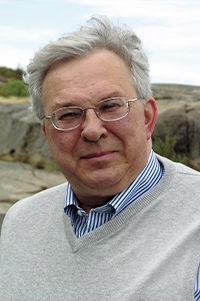 Unitizing Engineers and Scientists
Unitizing Engineers and Scientists
The history of measurement is also the history of engineering and science, and the interplay between them.
By Henry Petroski
The International System of Units (SI) was established in 1960. Fifteen years later, US legislation declared the system commonly known as metric to be preferred for the nation’s trade and commerce, as well as within federal agencies. However, the imperial system is still most often used in this country, including in engineering teaching and practice. For instance, civil and mechanical engineering continue to employ foot and pound rather than kilogram and meter units.
This is unfortunate, not only because it complicates international commerce but also because it is a lost opportunity to inject into the engineering curriculum some of the rich history that is implicit in the many SI units of measurement named after engineers. Knowing for whom and why a specific unit of measurement is named as it is might also motivate students to learn more about our profession.
Take the hertz (Hz), the SI unit for frequency in cycles per second. It is named for German physicist Heinrich Hertz because he was the first to demonstrate the existence of electromagnetic waves, thereby confirming experimentally the theoretical prediction of his Scottish predecessor James Clerk Maxwell. I first learned of Hertz in an engineering mechanics course examining contact between elastic bodies, such as a steel wheel rolling on a steel rail. The induced stresses are known as Hertzian because in the early 1880s Hertz did seminal work in calculating them. He was likely attracted to the problem because he had studied engineering at the University of Munich before doing graduate work in physics at the University of Berlin.
Many standardized units owe their existence to the engineers who developed techniques and instruments to measure natural phenomena and their effects, thereby providing a means of quantifying them. The SI unit for power is the watt (W), in honor of the engineer James Watt, who used measures of input and output to guide his development of a practical steam engine. Indeed, his efforts to understand and improve upon the efficiency of the machine led to the science of thermodynamics.
Watt and Hertz are not the only engineers memorialized in eponymous units of measurement. However, googling “SI units named after engineers” leads to a Wikipedia list of “scientists.” The names of nineteen became SI units, and another twenty-eight non-SI ones. However, according to Wikipedia’s brief biographies, six of the nineteen SI-unit scientists were also engineers (Becquerel, Coulomb, Kelvin, Siemens, Tesla, and Watt), and seven also inventors (Ampère, Pascal, Siemens, Tesla, Volta, Watt, and Weber). In other words, about half of the scientists listed engaged in pursuits both theoretical and practical.
Like Hertz, the remaining SI unit namesakes (Celsius, Faraday, Gray, Henry, Joule, Newton, Ohm, and Sievert) are identified in Wikipedia’s bios only as scientists. But using that seemingly exclusive designation can be as informative as calling every member of a certain food group a vegetable. It may be true that green beans and red cabbages are both vegetables, but using a single word to describe them gives no hint of their significant differences.
Hertz was by education both scientist and engineer. James Joule managed the family brewery; operating it profitably required the engineering of processes, which in turn prompted scientific inquiry into them. And for decades Isaac Newton ran the Royal Mint; the position demanded the kind of practical oversight more commonly associated with engineering than science.
Accomplished individuals tend to be more than one-dimensional. Describing both Jeff Bezos and Warren Buffet as billionaires obscures the fact that in college one studied engineering and the other business. In the context of the current pandemic, the term doctor may designate anyone from an epidemiologist to a vaccine developer. It may indeed be a scientific problem to identify different strains of the coronavirus, but it is an engineering one to develop the measuring devices needed to test for and treat the variants.
Science and engineering have always had a symbiotic relationship, and it is implicit in the names of measurement units common to both. We might make it explicit by occasionally interrupting the demonstration of a method or solution with an anecdote about the units following the numbers. Although it might be argued that the units represent science and the numbers engineering, that would be simplistic. We can’t have one without the other.
Henry Petroski is distinguished professor emeritus of civil engineering at Duke University.
Image Courtesy of Catherine Petroski